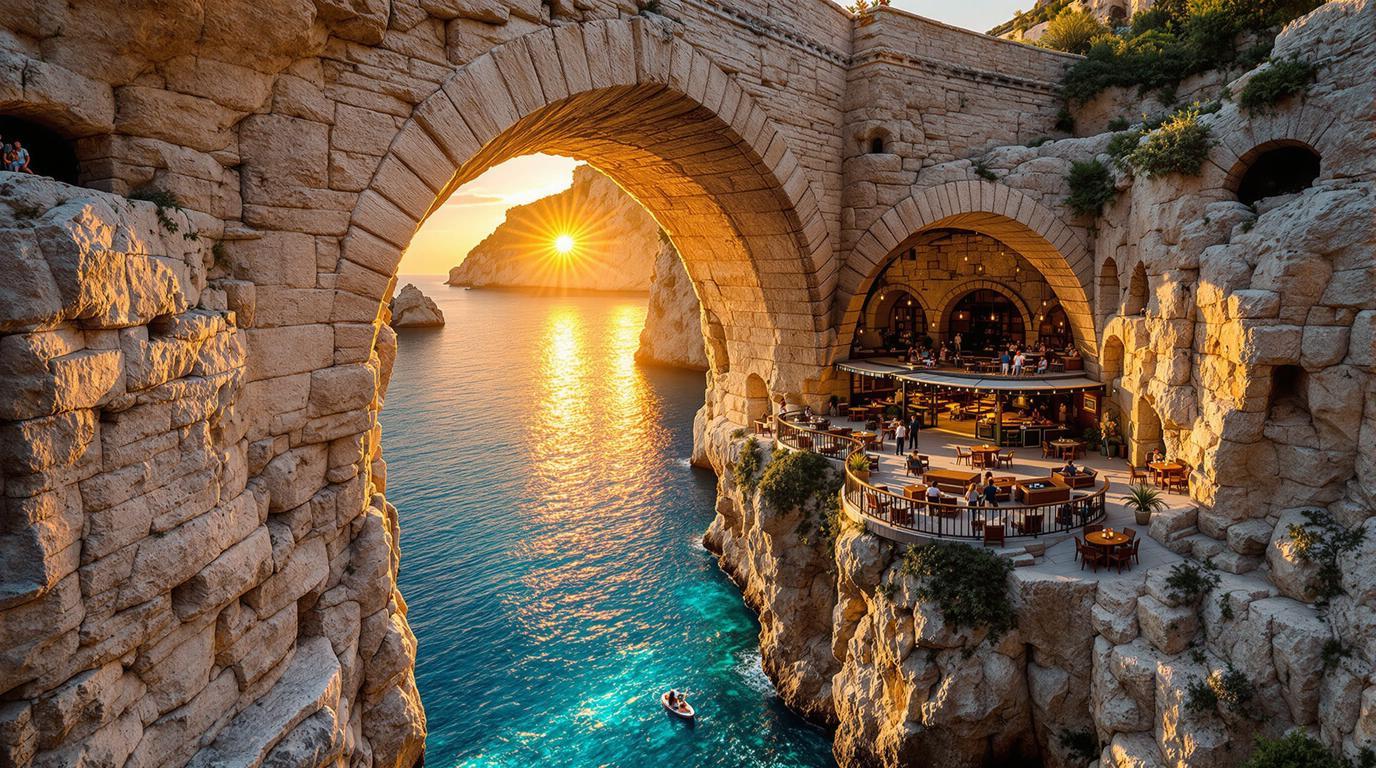Stepping through the massive stone gates of Dubrovnik’s Old Town feels like walking into a medieval fantasy brought to life. This Croatian coastal fortress, with its limestone streets polished by centuries of footsteps, represents one of Europe’s most perfectly preserved medieval cities. While Game of Thrones fans might recognize it as King’s Landing, the real Dubrovnik offers something far more captivating than any television set.
The walls that whispered through centuries
Dubrovnik’s most iconic feature—its imposing 2-kilometer stone walls—stands as a testament to medieval engineering. Rising up to 25 meters in certain sections, these 13th-century fortifications offer the city’s most spectacular views. For the best experience, arrive at 8 AM when the morning light bathes the terracotta rooftops in golden hues and before cruise ship crowds emerge.
“These walls have protected us through wars, earthquakes, and empires,” explains Marko Petrić, a local historian. “Walking them gives you a timeline of our resilience spanning nearly 800 years.”
Stradun: The limestone spine where history unfolds
The gleaming main street of Dubrovnik—Stradun—stretches 300 meters between the western Pile Gate and eastern Ploče Gate. This broad promenade, paved with limestone that glows amber at sunset, pulses with energy throughout the day. Local cafés serve strong Croatian coffee while church bells from the 1444 clock tower mark time as they have for centuries.
Hidden corners beyond the cruise ship routes
While most visitors cluster around Stradun, the true magic of Dubrovnik lies in its labyrinthine side streets. The narrow medieval alleyways climbing steeply from the main thoroughfare reveal quiet courtyards where locals tend to potted lemon trees and hang laundry across ancient stone walls—scenes unchanged for generations.
Buža: The hole-in-the-wall bar defying gravity
Perhaps Dubrovnik’s most spectacular secret hides through a literal hole in the southern wall. Buža Bar—meaning “hole” in Croatian—offers breathtaking clifftop views of the Adriatic. Perched precariously on rocks outside the city walls, this no-frills establishment serves cold drinks while patrons dive directly from the cliffs into crystal-clear waters below.
A cuisine shaped by sea and mountains
Dubrovnik’s culinary heritage reflects its position between mountain and sea. Fresh seafood dominates menus, particularly black risotto colored with cuttlefish ink. Local restaurants like Kamenice serve platters of shellfish pulled from the Adriatic that morning, while the surrounding hillsides provide olive oil that rivals anything found in Greece.
“Our cooking philosophy is simple—let the ingredients speak for themselves,” says Ana Kojaković, chef at a family restaurant running for three generations. “The sea salt, the olive oil, the fish… they need little more than lemon and respect.”
Beyond the walls: Island escapes a stone’s throw away
When the Old Town becomes crowded, locals escape to nearby Lokrum Island, visible from the walls and reachable by a 10-minute ferry. This uninhabited nature reserve features botanical gardens, peacocks, and abandoned monastery ruins. Its secluded coves offer swimming spots reminiscent of those found in the Philippines but without the long-haul flight.
The sky ablaze: Dubrovnik’s magnificent sunsets
As evening approaches, the limestone city transforms under spectacular sunset displays. From Mount Srđ, accessible by cable car, the entire walled city glows orange against the deepening blue Adriatic. This vantage point, similar to watching the Northern Lights in its otherworldly beauty, offers perspective on Dubrovnik’s strategic position.
A city reborn from devastating conflict
Dubrovnik’s immaculate appearance belies its recent troubled history. In 1991-92, the city endured months of siege during the Croatian War of Independence, with over 60% of buildings damaged by shelling. Looking at its perfect restoration today, it’s nearly impossible to imagine the destruction—a tribute to Croatian determination to preserve their heritage.
When to experience Dubrovnik at its best
Visit during shoulder seasons (April-May or September-October) when temperatures remain pleasant but crowds thin considerably. Winter brings dramatic storms rolling across the Adriatic and peaceful, empty streets—a contemplative Dubrovnik few visitors experience, similar to having a private tour of a hidden paradise.
Dubrovnik Old Town isn’t merely preserved—it’s alive. Beyond its UNESCO status and picture-perfect vistas, it remains a living community where traditions continue behind ancient doors. As evening lights illuminate the smooth stones of Stradun, the true magic of this Adriatic jewel reveals itself: a place where history breathes through every archway and alley.
